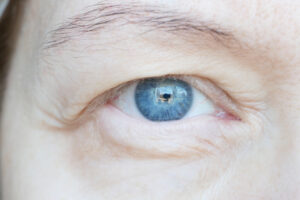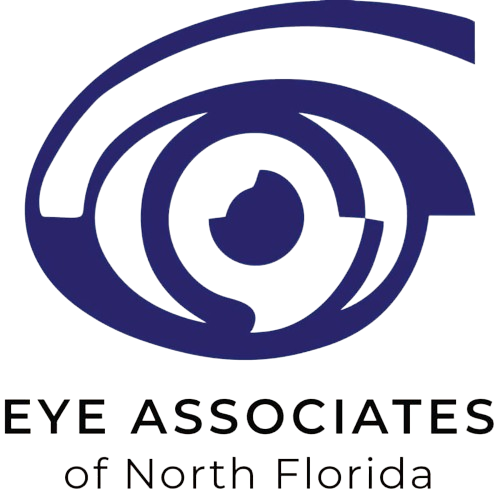Will Ptosis Surgery Improve My Vision?

Are drooping eyelids affecting your ability to see? Sometimes, impaired vision is not the result of a refractive error or another kind of eye condition inside the eye.

For some people, drooping or sagging eyelids can cause vision impairment. The extent to which an eyelid droops can vary widely.
If the drooping is severe enough that your lids impede the pupil, it can obstruct your vision. When ptosis negatively impacts your vision, ordinary activities like using a computer and driving can become challenging.
There are multiple conditions that can cause eyelid drooping. Ptosis is one of the most common ones and is a treatable condition.
Keep reading to find out if ptosis surgery will improve your vision!
What Is Ptosis?
When you have ptosis, one or both of your upper eyelids droop, often due to an issue in the eyelid muscle. It’s important to note that ptosis is not the same as excess skin or fat around the eyelids.
If you do not have an issue with the eyelid muscle but are still experiencing droopy lids due to excess skin or fat, your eye doctor may recommend a cosmetic blepharoplasty. During the blepharoplasty procedure, your eye surgeon can remove excess skin and fat to help reposition the eyelid.

In some cases, excess skin and fat are also removed during ptosis repair surgery if these symptoms are present in addition to an issue with the muscle. With ptosis, the droop can be mild or it can be significant.
Sometimes, it can cover part or the entire pupil, interfering with your visual field. This can obstruct your peripheral vision and even your central vision.
Ptosis can also cause blurry vision and double vision. In addition to impaired vision, many people find themselves rubbing their eyes and angling their faces upward in an attempt to see better.
A drooping eyelid can also affect your appearance, making you look tired. Anyone can develop ptosis, but it is most commonly found in older adults due to weakening or tearing of the muscles in the eyelid area.
Specifically, the levator muscle and the tarsus are affected. The levator muscle lifts the eyelid, while the tarsus helps it maintain its raised position.
These muscles typically weaken as a result of aging.
What Happens During Ptosis Surgery?
Ptosis can be effectively treated with ptosis repair surgery. The goal is to tighten the muscles responsible for raising the eyelid.

Ptosis surgery is performed in our office on an outpatient basis. After the eye area is numbed, an incision is made in the crease of your upper eyelid or the inside of the eyelid.
This placement ensures scarring is minimal. Once the muscles of the eyelid are accessible, your ptosis repair surgeon will tighten or strengthen them as needed.
Sometimes, a muscle needs to be reattached. The exact surgical approach will depend on the needs of the individual person.
During your consultation, your eye doctor at Eye Associates of Tallahassee will thoroughly assess your eyelids, including conducting tests and identifying the cause of your ptosis. That way, we can determine the most appropriate course of treatment for you.
Does Ptosis Surgery Fix Vision Problems?
If drooping skin is causing vision problems, ptosis surgery can allow you to see clearly again. By lifting the eyelids, the skin that is hanging down over your eyelids is moved back into proper positioning and out of your field of vision.
When ptosis is impairing your vision, ptosis surgery may be covered by your insurance. Ptosis surgery is an effective method of restoring vision for most people, but your results will depend on how much the ptosis interferes with your vision before your procedure.
Some patients may need an additional procedure to achieve their desired outcome. In addition to helping to fix vision problems, ptosis surgery yields several other benefits.
Once your eyelids are able to maintain a lifted position, you will look more refreshed and awake, enhancing your appearance. Many patients even remark that they look younger after the procedure.
Ptosis surgery can alleviate symptoms associated with drooping eyelids, such as eye strain and fatigue, as well.
What Is Recovery Like After Ptosis Surgery?
The majority of people who have undergone ptosis surgery can return to most normal activities within a week. You may experience some blurriness in the hours or days after surgery.

Your doctor will typically schedule a follow-up appointment for about a week later, so they can check how your eye is healing. There are some things you can do to promote healing and make yourself more comfortable during recovery.
Strenuous activities should be avoided, and you should also avoid touching or rubbing your eye. Some swelling, soreness, and bruising are normal.
Placing an ice pack over the eye can help reduce any discomfort. It is also important to keep the area clean.
It can be a few months before the eye heals completely. You can look forward to your results continuously improving as the area heals.
Is ptosis impairing your vision? Schedule an appointment at Eye Associates of Tallahassee in Tallahassee, FL, today!







